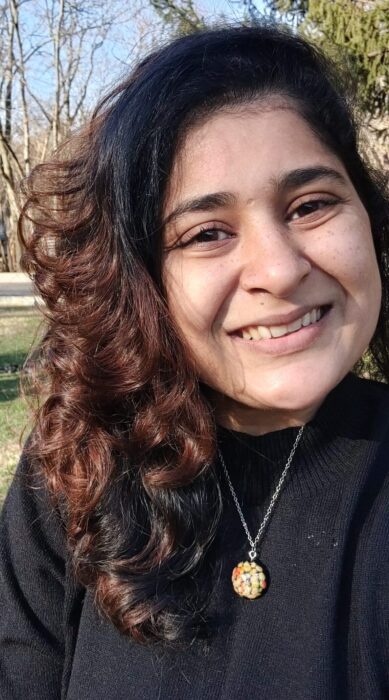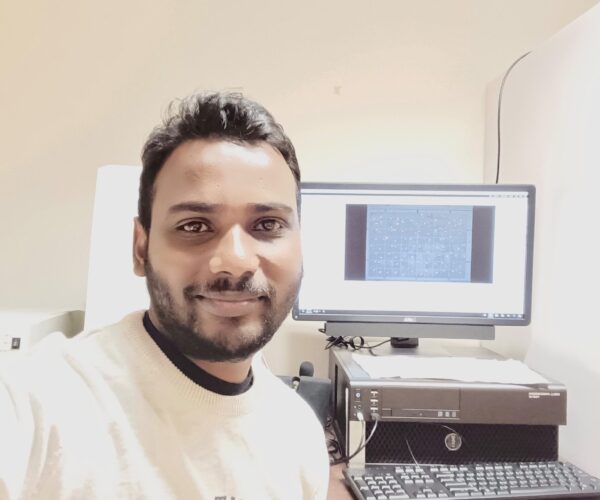Purdue HHS research labs elevate discovery for Overseas Visiting Doctoral Fellows
Written By: Rebecca Hoffa, rhoffa@purdue.edu
This semester, the Purdue University School of Health Sciences welcomed two doctoral students as part of the University’s Overseas Visiting Doctoral Fellowship program. Finding their fit in two College of Health and Human Sciences research labs, Fatema Currim and Karthikeyan Subbiaha Nadar Chelladurai both aim to improve human health and well-being through their research, which they will build upon during their 12 months on campus.
Sponsored by the Science and Engineering Research Board of India, the Overseas Visiting Doctoral Fellowship aims to provide meaningful international research experiences to some of the top doctoral students in India while also strengthening partnerships between higher education institutions in India and Purdue.
“This fellowship allows us to work with scientists who are leading in their particular area,” Chelladurai said. “If anybody gets the chance to work abroad on something in these high-end labs, they can understand what’s going on in the labs, how to intake data, how to interpret it and expand their knowledge. They can have the higher possibility to push their thinking to derive the perspective, set the direction and possibly to lead future research in the years to come.”
Slowing the spread of Parkinson’s disease

Fatema CurrimPhoto provided
Currim is pursuing her PhD in biochemistry, investigating the role of intercellular communication in Parkinson’s disease. Since she arrived on campus in February, Currim has been working under the direction of Jason Cannon, associate professor of health sciences, in his lab.
Because Parkinson’s disease is the second most common neurodegenerative disorder worldwide, Currim is interested in understanding how the disease spreads from the small part of the brain where the disease is known to originate to other parts of the brain. To study this, Currim is looking at small, nanometer-sized agents called exosomes, which may carry toxic proteins that help the disease spread.
Currim noted that the advanced research techniques and preclinical models used in Cannon’s lab allow her research to become more translational, or directly related to improving human health.
“It’s a very enthusiastic and a very healthy work environment,” Currim said. “I’m really enjoying myself here. There are a lot of facilities. It’s very self-sustained. I find here that the instruments are very easily accessible, so that is a great help with expediting my work.”
After she graduates with her PhD, Currim plans to continue her research in a postdoctoral position in either the United States or India. This experience could be a big step in her graduate research and offer opportunities for publication.
“For a postdoctoral position, the more experience that you have from different labs and working in different environments is good for your CV, so this is good for me,” Currim said.
Connecting chemical exposures and Alzheimer’s disease

Karthikeyan Subbiaha Nadar ChelladuraiPhoto provided
When he arrived at Purdue in January, the frigid temperatures were interesting to Chelladurai, who is used to the warmer climate of Chennai, India, where he attends Sathyabama Institute of Science and Technology. However, he has found Jennifer Freeman, professor of health sciences, and her lab to be welcoming, and he has begun the preliminary work that will allow him to advance his research, which investigates the connection between chemical exposure and neurodegenerative disorders.
“I’ll have the opportunity to perform new experiments and learn advanced techniques, so that it will help me to understand the advanced molecular-level functions in what I’m doing in my research,” Chelladurai said.
While the main focus of Chelladurai’s work examines the neurological and health effects of chemical exposures, he is particularly interested in understanding how chemical exposures affect neurons in the brain and the part they play in Alzheimer’s disease — an area of research that has not been well-established. He aims to use zebrafish preclinical models in Freeman’s lab to understand the pathological relationship between these exposures and the development of Alzheimer’s disease.
After earning his PhD, Chelladurai plans to pursue a career in research, with the goal of contributing to new knowledge related to this research area. He credits the Overseas Visiting Doctoral Fellowship and his experience in the College of Health and Human Sciences with helping him achieve this.
“People are coming here from all over the world, so the culture, the mindset, even the knowledge setting, everything is new to me,” Chelladurai said. “This will improve my learning, knowledge and scientific way of thinking.”
For information about the fellowship and the application process, visit the Science and Engineering Research Board’s website.